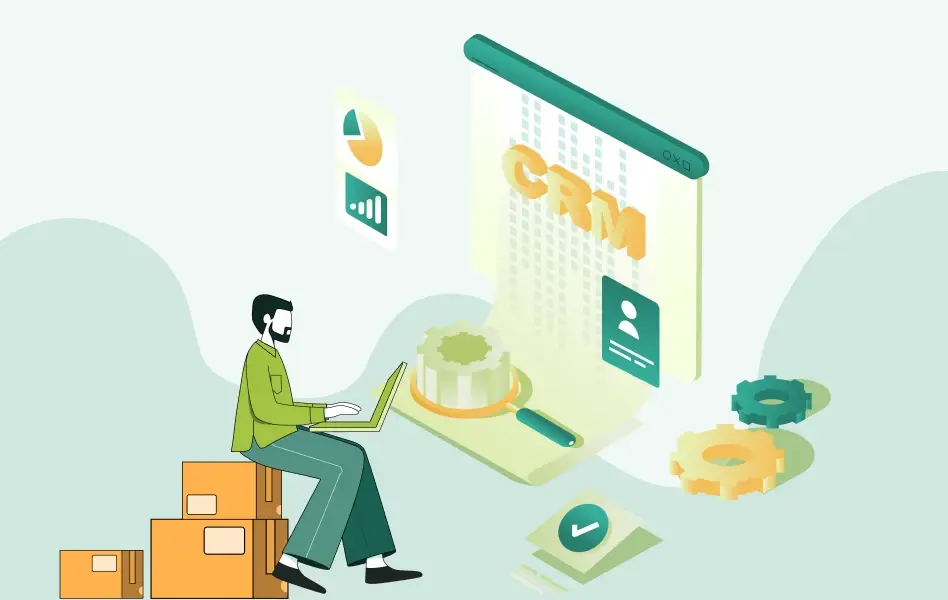Contents
Ever sat in a meeting where everyone’s a bit frustrated with the outside sales team? It’s a common scene. But before we start pointing fingers, let’s take a closer look. Those reps? They’re doing their best working with an outdated playbook. The outside sales model we’ve all grown accustomed to was built for a different era – one focused on servicing retailers and dealers in brick-and-mortar stores.
The problem is that the buying landscape has evolved dramatically and exciting new growth is happening in the small-scale merchant segment. This would include your small businesses, mom-and-pop stores, and online B2C brands. The rep who thrived on securing large orders through face-to-face meetings with retailers just isn’t cut out for the small-scale merchants. Projects under this segment are smaller, more intricate, and often don’t lead to immediate sales. It’s no wonder reps might feel uncomfortable or unmotivated in this environment.
Here’s the good news: instead of feeling lost and confused, you can hit the refresh button and restructure your sales organization for optimal performance. Wondering how? Let’s dive right in.
Understanding Your Customer Segments: The Key to Targeted Strategies
The wholesale industry caters to three distinct customer segments, each requiring a unique sales and management approach:
1. Small-scale merchants
To truly serve small-scale merchants, you need to understand their specific needs and characteristics:
a) Risk aversion
Small merchants are highly risk-averse because of their limited resources and tight budgets. They are wary of investing in products without being certain of quality or reliability.
b) Trust-based relationship
They need assistance in navigating product offerings and making informed purchasing decisions. Consequently, building trust becomes paramount in their decision-making process.
c) Small order sizes and frequency
Smaller quantities and higher frequency characterize small-scale merchant orders because of their limited storage space and capital constraints. Their ordering style is need-based.
d) Distinctive expectations for reps
A field rep visiting once in 3 months doesn’t work for these merchants. Many of these business owners are younger and tech-friendly and prefer digital interactions over traditional field visits.
To become the go-to supplier for small merchants, you need to make their lives easier. Here’s how you can do it:
a) Assist with product recommendations
You must work closely with small-scale merchants and offer personalized guidance and recommendations tailored to their needs and preferences.
b) Establish dedicated support channels
Establish dedicated support teams for personalized assistance and prompt service. Stay in constant touch via digital channels to enhance engagement and rapport.
c) Invest in relationship-building activities
You can facilitate regular check-ins, personalized communication, and loyalty programs for long-term relationships.
Introducing the Inside Sales Model: A Small Merchant’s Best Friend
The small-merchant segment is where the inside sales model shines. An in-house team dedicated to small merchants is a true consultant, saving them time by putting together the perfect product mix for each project.
Building a whole new team might seem daunting, but with a little optimization and technology, you can leverage existing resources. Consider repurposing a few customer service team members to pilot the inside sales model.
We also want to make it clear that this doesn’t mean outside reps are obsolete! They can still be a valuable asset for small merchants with specific needs requiring an in-person visit. Since you’ve already identified the need, reps won’t feel like their time is wasted, making these visits more productive for everyone.
2. Small to Mid-Sized Retailers
This segment often has multi-generational owners who value the personal touch. Here, your sales reps should be front and center, building relationships and making regular in-person visits.
3. Large Retailers
Dedicated sales and support are crucial for large retailers in the wholesale sector. Depending on volume, consider assigning Key Account Managers who focus on just a few of these high-value customers. These reps will be responsible for building strong relationships with buyers and aligning product development efforts with their specific needs. When hiring for this role, prioritize candidates with existing relationships with these buyers, as cultivating such relationships can take years to establish.
Building the Right Sales Organization Structure
The ideal structure for your sales team will depend on its overall size. Here’s a potential model:
Remember, the VP layer is optional. The Chief Sales Officer (CSO) might directly oversee the sales teams at smaller organizations. As the company grows, these VP positions can be added to provide additional management and strategic focus.
This structure allows wholesalers to balance customer focus with efficient sales operations, while remaining scalable based on their specific needs.
The Way Forward
By implementing a targeted approach that caters to the specific needs of each customer segment, you can create a sales organization that thrives in today’s dynamic market. It’s time to ditch the one-size-fits-all approach and embrace a structure that fuels optimal performance!






































































































